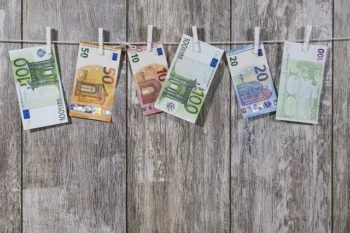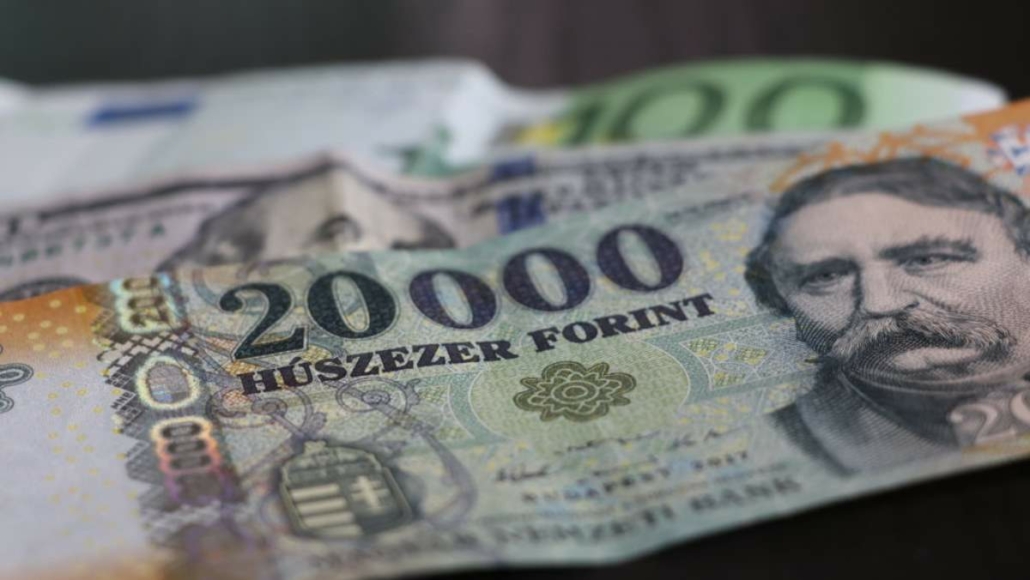The Hungarian forint has fallen unstoppably in recent days – is a total collapse imminent?
In recent days, domestic events have been the main drivers of the forint exchange rate. Such as the abolition of the fuel price cap, inflation data, and the harsh criticism of the central bank governor. The latter had an especially great negative impact on the forint. Recessionary expectations have pushed oil prices lower, and the Hungarian market is keeping a watchful eye on fuel prices. Experts say that if prices do not lower at the petrol stations, it could be a sign of serious danger.
The forint has been hovering around the 410 level several times in the past week. It even briefly dipped below it. The Hungarian currency started Monday morning at this level, then started to weaken rapidly around 10-11 AM, in line with the speech of György Matolcsy, the central bank governor. The forint didn’t even stop until 413, Index reports.
But what did Matolcsy say that beat the forint?
According to Matolcsy, inflation is not “because of the sanctions” or “war-related”. It has been rising since the summer of 2021 due to energy prices. “We are in trouble, in many ways we are in trouble because of our own decisions,” the president of the Hungarian National Bank (MNB) said. He went on to say that there was a breakdown in economic policy coordination between the government and the central bank, which he believes is costly.
These serious statements may also have been behind the fall in the forint exchange rate.
Back to the forint exchange rate
On Wednesday, however, after the fuel price cap was lifted, the domestic currency strengthened massively, even reaching the 408 level. However, we were not able to rejoice for too long: fresh inflation data arrived on Thursday and pushed the forint lower.
According to the Hungarian Central Statistical Office (KSH), prices rose by 22.5 percent in November compared to the same month last year, Tőzsdefórum writes. This is a negative record for the EU. Gyula Pleschinger, a member of the Monetary Council of the Central Bank (MNB), pointed out on Wednesday that food prices in Hungary have a greater impact on inflation than in neighbouring countries. We have also written about this.
Unbelievably high numbers
Over the past year, household energy and food prices have risen the most, Index writes. On average, consumer prices rose by 1.8 percent in one month. The steepest price rises were for eggs (102.9 percent), bread (81.8 percent), dairy products (79.0 percent), cheese (78.8 percent) and butter and butter cream (77.3 percent).
The brutal inflation data sent the forint tumbling. From 411 against the euro in the early hours of Thursday morning to 415 in the space of 1-2 hours. With this, another wave of weakening has begun. The forint has broken through a level it had been avoiding for days: the EUR/HUF exchange rate of 415. It has even approached the 420 level! After some rebounding, the forint is currently trading around 418 against the euro.
National bankruptcy? Maybe not just yet
Although the outlook is not very positive, it is worth noting that Hungarian public finances are still very far from collapse, Tőzsdefórum reassures us. As we can follow on the website of the Public Debt Management Centre (PDMC), Hungary’s funding is still secured, even if it is at higher interest rates. Investors will therefore continue to buy Hungarian government bonds and treasury bills. As long as this remains the case, there is no realistic fear of a bankruptcy or any kind of emergency scenario.

Read alsoA leaked confidential Brussels letter shows Hungary should prepare to lose EUR billions of EU funds
Source: Index.hu, Tőzsdefórum, DNH
please make a donation here
Hot news
Drama: number of births in a 20-year low in Hungary
Yay or nay? – 6 odd Hungarian delicacies that make our skin crawl
Budapest tourism “exploded” this past weekend
Container transport in Budapest may stop: How will this affect Hungarian economy?
Minister: Hungary will protect its territory by every means possible
Orbán cabinet may double airspace fee: another ticket price increase?





2 Comments
The “Band Aide” effects – those in the know, those of eminency and “others’ with credentials and proven track records, in Economics & Finance, again have been PROVEN correct, that the FORINT is a doomed currency.
It ALL comes back to the question, what is going to SUSTAIN hold the forint to a level, that is SUSTAINABLE?
In answering that prevalent question, in the vastness of searching trying to find an answer that at least gives an inkling of HOPE, – the importance to Hungary – its Future, of having a currency of WORTH, the answer is – Nothing.
The forint is in a strong “free fall” against ALL Major Economies.
This is NOT helped by the CONTINUATION of the collapse of Hungary – its relationship as a member of the Family of European Countries failing in Rule of Law matters that require Hungary to change its POLITICAL Dogma, instead of Hungary, from within the European Union, Great Britain & Ireland, the United States of America and the Global World, aggressively growing being viewed under a Dictatorial form of Government, by its present “dictatorial” Prime Minister – Victor Orban.
The PRINCIPAL componentry of ALL Financial & Economic mechanisms used to maintain keep afloat the Hungarian Economy – they ALL are in a SICKENING downward trending movement.
Stabilization and Sustainability – impossible to achieve in the collapsing Hungarian economy.
Its NADIR – bottom – is distanced from being reached, and the RAMIFICATIONS impact on Hungary – the quality of life of millions of Hungarians – the effects on them will be SAVAGE.
I invite people to check this site, from time to time. Illuminating (and shocking) data:
https://tradingeconomics.com/hungary/government-bond-yield
“The Hungary Government Bond 10Y is expected to trade at 9.56 percent by the end of this quarter, according to Trading Economics global macro models and analysts expectations. Looking forward, we estimate it to trade at 10.52 in 12 months time.”
For comparison, Russia is currently trading at 10.1 percent. Nothing to worry about, then!